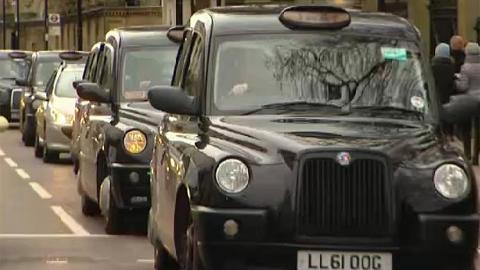It’s the most famous taxi in the world and a British icon, rivalling the Queen and red pillar boxes for global recognition. Now there’s a battle to make London’s black cabs greener. Geely, the Chinese automaker that owns the London Taxi Company, is investing £250m in a zero-emission capable version of the world-famous black cab to be built in Coventry.
British firm Metrocab based in nearby Tamworth has also developed an eco-friendly version of the London cab. Meanwhile Shenzen-based BYD has signed a deal to provide electric cars for London chauffeuring firm Thriev.
It’s no surprise these innovations are happening in London as the city has taken increasingly aggressive steps to combat poor air quality. Since 2008 London has hosted one of the largest low emission zones (LEZ) in the world and an ultra-low emission zone (ULEZ) has now been announced that will come into force in central London in 2020, with proposed regulations on new taxi purchases as early as 2018.
On the face of it, electric vehicles (EVs) are the perfect fit for taxis. Taxi firms differ from private consumers as the vehicles can be in almost continuous use, so running and operational costs are much more important than initial purchase price. Wherever electricity is significantly cheaper than petrol, cab companies are able to absorb the higher costs of EVs. Research by Coventry University on small car fleets supports the evidence from a growing number of EV taxi firms that higher levels of vehicle usage can quickly translate into savings.

Chris Radburn/PA
Electric vehicles are also more reliable than their conventionally fuelled equivalents as EVs have fewer moving parts – which is a big advantage when temporarily losing a cab means an immediate loss of revenue. Low or zero tailpipe emissions may not always be a big draw for individual passengers, but they can be enough to win corporate and government clients keen to burnish their environmental credentials. Finally, larger firms can enter the electric vehicle market on a trial basis, supplementing their fleet without the risk of disruption that individual buyers might experience if going electric proves to be not to their liking.
Bumps in the road
Yet technical challenges remain. Taxis aren’t public transport. They don’t follow set routes, might not own their own specialist infrastructure and are less likely to have set idling times. As such, limited range, charging time and availability are all more significant impediments for cab firms.
The new model proposed by the London Taxi Company would overcome this challenge by operating a hybrid engine capable of running on electricity in the ultra-low emissions zone and petrol outside it. Metrocab’s solution is to use a petrol range extender to boost battery life. At the same time, firms such as Thriev have sought to roll out their own charging infrastructure to reduce charge times down to half an hour.
Yet clearly doubts linger – and it is telling that while Nissan decided to suspend its petrol-based version of the black cab (also assembled in the West Midlands) in light of the ULEZ announcement, they have not announced plans to introduce an electric version. As David Bailey at Aston Business School observes, the current market leader in electric vehicles appears to be adopting a wait-and-see approach, to see how the market develops. After all there is still quite a bit of scope for change – and by 2018 a range of hydrogen fuel cell vehicles will provide a faster fuelling, if more expensive, alternative.
Today London, tomorrow the world?
These concerns are real, but so are the opportunities for manufacturers. London’s ultra-low emissions zone announcement represents the next step in a trend towards city-level polluter-pays policies. Europe already has well over 100 low emission zones. Paris, for instance, already operates a very visible electric vehicle sharing scheme and a ban of diesel vehicles has been mooted for 2020. In Beijing, new emission limits are being considered, while an entire zero-emission city is being built in Dongtan, an island near Shanghai.
Global warming may be low on the priority list for national governments, but for city authorities the impact of emission on air quality is often an immediate and pressing concern. Manufacturers that are able to make a success of the London ULEZ may find a queue of emerging-market megacities considering similar regulations.

Håkan Dahlström, CC BY
In this context, it is no coincidence that two Chinese car-makers are leading the race. Electric taxis are more common in Chinese cities, in large part due to the high costs of liquefied natural gas as an alternative fuel. Chinese automakers have also struggled to establish their brands in Europe and America, but in the taxi market they are more able to compete on specifications.
Geely’s investment in LTC could be a masterstroke. In one leap, Geely acquires a globally recognised design icon, a relatively protected launch market in the form of the London black cab trade and access to significant research and development resources in the West Midlands. Geely already produces a version of the London cab in Shanghai and has a stated interest in pushing exports for the updated electric model.
All of which is good news for the UK. The ultra-low emissions zone both improves health in the capital and injects life into the emerging electric taxi sector where the country has historic design advantages. This demonstrates the strength of coupling forward-looking environmental policies with regional R&D investments in niche sectors. Whether or not this outcome is design or a happy coincidence will surely not trouble the prime minister as he touts the deal on the campaign trail.
![]()
This article was originally published on The Conversation.
Read the original article.



